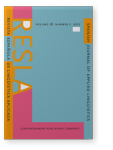Vol. 28:2 (2015) ► pp.382–415
Vol. 28:2 (2015) ► pp.382–415
Language learning ‘in the wild’ in transnational encounters
This article draws on a corpus of transnational encounters that are not a priori about learning, recorded at a university in Catalonia immersed in processes of internationalization. However, by taking a CA-for-SLA approach to the data, it is shown how opportunities for language teaching and learning emerge across the settings, from the most institutional (i.e. formal ceremonies) to the most informal interactions (i.e. friendly conversation), and are mediated by available plurilingual and multimodal resources. In this regard, the analysis yields results that differ from previous research conducted in similar higher education contexts in which categorizations of participants as language ‘experts’/‘non-experts’ or ‘teachers’/‘learners’ were avoided (e.g. Kurhila, 2004). Such data prompts the author to argue that beyond simply recognizing the potential for second language learning ‘in the wild’ at universities going about internationalization, active steps could be taken to implement strategies that would enhance opportunities for language learning to happen.
